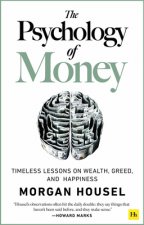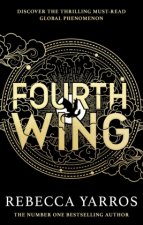
Code: 01747548
Images of the Body in Architecture
by Kirsten Wagner, Jasper Cepl
Der Band Images of the Body in Architecture. Anthropology and Built Space thematisiert das Verhältnis zwischen dem menschlichen Körper und dem gebauten Raum, das die Architektur in Praxis und Theorie auf elementare Art und Weise b ... more
- Language:
 English
English - Binding: Hardback
- Number of pages: 360
Publisher: Wasmuth & Zohlen, 2014
- More about this

58.83 €
RRP: 60 €
You save 1.17 €

Low in stock at our supplier
Shipping in 19 - 25 days
Potřebujete více kusů?Máte-li zájem o více kusů, prověřte, prosím, nejprve dostupnost titulu na naši zákaznické podpoře.
Add to wishlist
You might also like
Give this book as a present today
- Order book and choose Gift Order.
- We will send you book gift voucher at once. You can give it out to anyone.
- Book will be send to donee, nothing more to care about.
More about Images of the Body in Architecture
You get 148 loyalty points
 Book synopsis
Book synopsis
Der Band Images of the Body in Architecture. Anthropology and Built Space thematisiert das Verhältnis zwischen dem menschlichen Körper und dem gebauten Raum, das die Architektur in Praxis und Theorie auf elementare Art und Weise bestimmt. Mit den drei Schwerpunkten zum anthropometrischen, physiologischen und disziplinierten Körper wird an die jüngere Körpergeschichte angeschlossen, deren Ergebnisse erst in Ansätzen auf die Architektur bezogen worden sind. Intendiert ist eine kritische Anthropologie der Architektur. Dabei wird zum einen nach den der Architektur historisch zugrunde liegenden Körperbildern gefragt, nach ihren Visualisierungen und ihrer Bedeutung für den gebauten Raum. Zum anderen wird die Architektur selbst als eine soziale Praxis betrachtet, die in ihrer Materialität und räumlichen Ordnung den Körper bedingt. Der Band versammelt Beiträge aus der Kulturwissenschaft, Architekturtheorie, Kunstgeschichte, Medizingeschichte, Soziologie und Philosophie. §The essays collected in this volume are intended to stimulate research in the anthropology of architecture on the basis of a critical history of the body and its cultural constructions. §The analogy between architecture and the human body is rooted in the fundamental impact the latter has on ordering, symbolizing, and interpreting the world. Correspondingly, the metaphorical conceptualization of the built environment in terms of the human body was already practiced in early cultures and has determined architectural theory since antiquity. While the architectural treatises of early modern times vividly imagine anthropomorphic and anthropometric figures, they seem to be overcome by an architectural theory that is based on purely rational as well as mechanical laws. However, these figures were never totally abandoned, and Le Corbusier s Modulor is only one, if not the most prominent example, for their ongoing reception and transformation in modern times. The human sciences of the 19th century played a significant role in this process. Physiology and psychology brought about not only new experimental devices for analyzing the human body and its physiological functions, but also new images of the body that directly went into aesthetics, art history, and architectural theory. This new understanding of the body had a large impact on the production and reception of modern architecture. Due to this background the arts eventually became anthropologically grounded. §With contributions by Tobias Cheung, Scott Drake, Günter Feuerstein, Tanja Jankowiak, Eckhard Leuschner, Harry Francis Mallgrave, Indra Kagis McEwen, Irene Nierhaus, Philipp Osten, Heleni Porfyriou, Paolo Sanvito, Christoph Schnoor, Sven-Olov Wallenstein, Frank Zöllner, Beatrix Zug-Rosenblatt, and others. §On the editors: §Kirsten Wagner is professor for cultural studies and communication science at the University of Applied Sciences in Bielefeld. She studied art history, German literature, sociology, and cultural studies in Braunschweig, Oldenburg, and Berlin. She received a PhD for a dissertation on the spatialization of knowledge in the computer era. From 2002 to 2010 she was a research fellow at the Institute for Cultural Studies at Humboldt-Universität zu Berlin. Her research focuses on images of the body in architecture, the theory and history of spatial knowledge organization, aesthetics and theories of perception in modernity, and the image of the city. §Jasper Cepl is assistant professor at the Technische Universität Berlin, where he has taught architectural theory since 2003. He studied architecture in Aachen and Berlin. §He is the author of Oswald Mathias Ungers. Eine intellektuelle Biographie (Cologne 2007), for which he received a PhD in 2006. Having published widely on the history and theory of architecture, he has also, among other things, edited a monograph on Hans Kollhoff in 2004 and the anthology Quellentexte zur Architekturtheorie (with Fritz Neumeyer) in 2002.
 Book details
Book details
58.83 €
- Full title: Images of the Body in Architecture
- Subtitle: Anthropology and Built Space
- Author: Kirsten Wagner, Jasper Cepl
- Language:
 English
English - Binding: Hardback
- Number of pages: 360
- EAN: 9783803007315
- ISBN: 3803007313
- ID: 01747548
- Publisher: Wasmuth & Zohlen
- Weight: 1175 g
- Dimensions: 247 × 166 × 33 mm
- Date of publishing: 15. December 2014
Trending among others
-

The Book of Bill
23.77 € -14 % -

Gravity Falls Journal 3
16.41 € -23 % -

Berserk Deluxe Volume 1
44.42 € -11 % -

Pumpkin Spice Cafe
11.78 € -17 % -

Berserk Deluxe Volume 2
52.28 € -

White Nights
3.52 € -23 % -

It ends with us
8.76 € -18 % -

48 Laws Of Power
18.03 € -9 % -

A Little Life
17.52 € -

Atomic Habits
15.91 € -14 % -

Berserk Deluxe Volume 3
48.86 € -2 % -

Gilmore Girls: The Official Advent Calendar
28.91 € -25 % -

Surrounded by Idiots
10.47 € -29 % -

Jujutsu Kaisen, Vol. 23
9.76 € -26 % -

The 48 Laws of Power
24.57 € -5 % -

The Official Stardew Valley Cookbook
22.36 € -22 % -

Berserk Deluxe Volume 4
45.23 € -10 % -

A Good Girl's Guide to Murder
8.15 € -25 % -

Iron Flame
16.31 € -17 % -

A Curse For True Love
10.37 € -12 % -

Berserk Deluxe Volume 5
50.47 € -

It Starts with Us
8.96 € -16 % -

Twisted Love
9.76 € -24 % -

Powerless
10.47 € -18 % -

Twisted Hate
10.17 € -20 % -

The Husky and His White Cat Shizun: Erha He Ta de Bai Mao Shizun (Novel) Vol. 6
16.21 € -19 % -

Court of Mist and Fury
9.36 € -18 % -

Twisted Lies
9.76 € -24 % -

English File: Intermediate: Student's Book with Online Practice
25.58 € -7 % -

Reckless
10.27 € -20 % -

Psychology of Money
18.93 € -3 % -

Chainsaw Man, Vol. 16
10.77 € -18 % -

Berserk Deluxe Volume 6
51.17 € -

Everything I Know About Love
10.37 € -29 % -

Twisted Games
9.76 € -17 % -

Court of Thorns and Roses Paperback Box Set (5 books)
50.07 € -20 % -

Vagabond (VIZBIG Edition), Vol. 1
24.57 € -

English File Upper Intermediate Student's Book with Student Resource Centre Pack (4th)
36.36 € -6 % -

Gravity Falls: Lost Legends
17.82 € -15 % -

Court of Thorns and Roses
9.26 € -19 % -

Headway: Elementary: Student's Book with Online Practice
24.98 € -7 % -

A Court of Wings and Ruin
10.77 € -6 % -

The Courage To Be Disliked
10.97 € -14 % -

Headway: Elementary: Workbook Without Key
25.58 € -4 % -

A Court of Silver Flames
10.17 € -20 % -

Meow
20.75 € -

Once Upon A Broken Heart
10.67 € -17 % -

SOLO LEVELING V09
17.52 € -12 % -

Fourth Wing
10.27 € -28 %
Collection points Bratislava a 2642 dalších
Copyright ©2008-24 najlacnejsie-knihy.sk All rights reservedPrivacyCookies






 15549 collection points
15549 collection points Delivery 2.99 €
Delivery 2.99 € 02/210 210 99 (8-15.30h)
02/210 210 99 (8-15.30h)